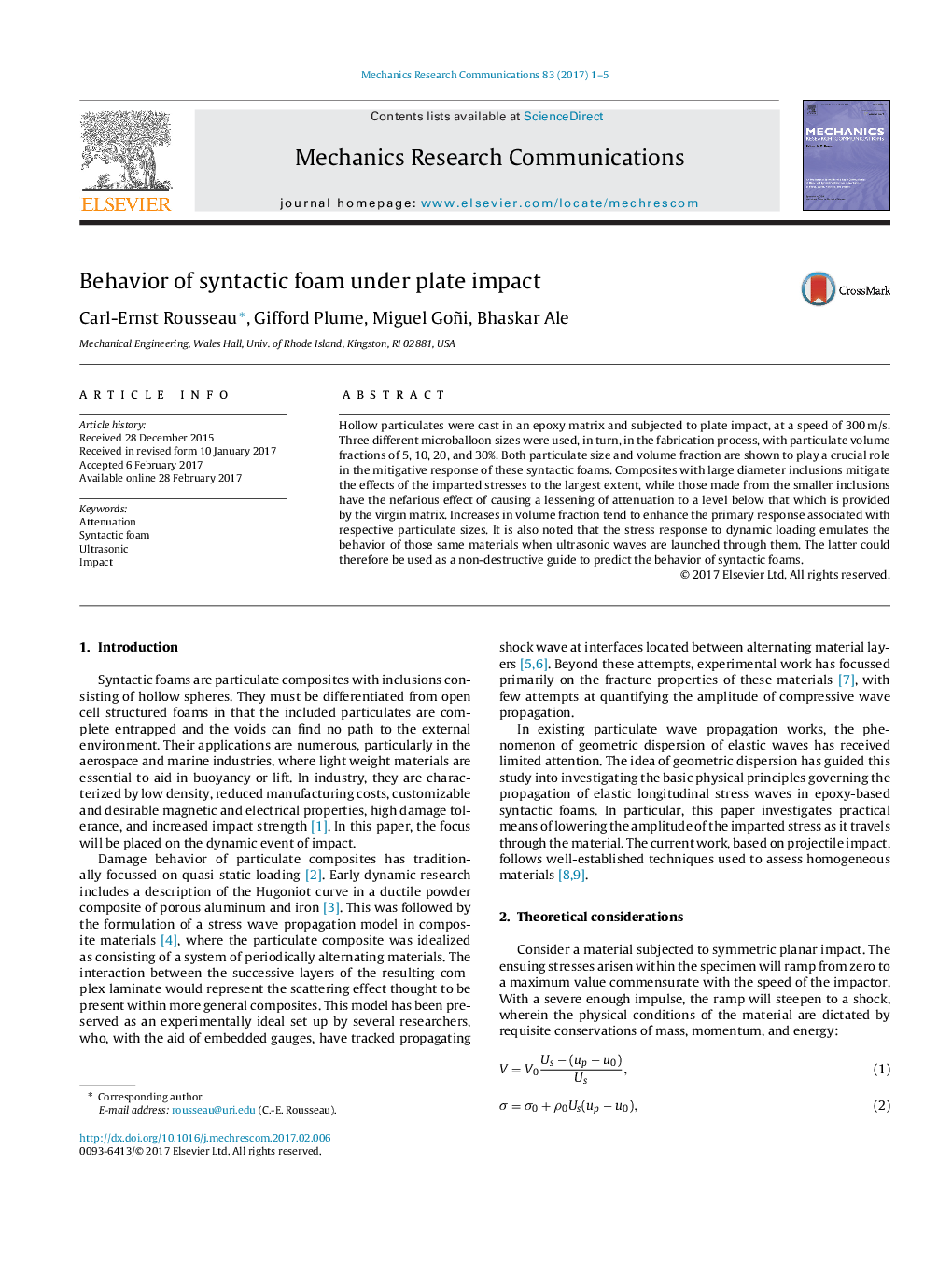| Article ID | Journal | Published Year | Pages | File Type |
|---|---|---|---|---|
| 5018601 | Mechanics Research Communications | 2017 | 5 Pages |
Abstract
Hollow particulates were cast in an epoxy matrix and subjected to plate impact, at a speed of 300Â m/s. Three different microballoon sizes were used, in turn, in the fabrication process, with particulate volume fractions of 5, 10, 20, and 30%. Both particulate size and volume fraction are shown to play a crucial role in the mitigative response of these syntactic foams. Composites with large diameter inclusions mitigate the effects of the imparted stresses to the largest extent, while those made from the smaller inclusions have the nefarious effect of causing a lessening of attenuation to a level below that which is provided by the virgin matrix. Increases in volume fraction tend to enhance the primary response associated with respective particulate sizes. It is also noted that the stress response to dynamic loading emulates the behavior of those same materials when ultrasonic waves are launched through them. The latter could therefore be used as a non-destructive guide to predict the behavior of syntactic foams.
Related Topics
Physical Sciences and Engineering
Engineering
Mechanical Engineering
Authors
Carl-Ernst Rousseau, Gifford Plume, Miguel Goñi, Bhaskar Ale,
